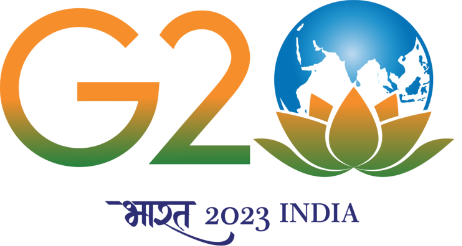The National Water Development Agency (NWDA), was set up in July 1982 as Autonomous Society under the societies registration act 1860, to carry out the water balance and other studies on a scientific and realistic basis for optimum utilization of water resources of the Peninsular river system for preparation of feasibility reports and thus to give concrete shape to Peninsular river development component of National perspective plan prepared by Central Water Commission and the then Ministry of Irrigation (now Ministry of Jal Shakti, Department of Water Resources, River Development & Ganga Rejuvenation(DoWR, RD& GR). In the year 1990, NWDA was also entrusted with the task of Himalayan Component of National Perspective Plan. In 2006, it was decided that NWDA will explore the feasibility of intra-states links and to take up the work for preparation of Detailed Project Report (DPR) of river link proposals under National Perspective Plan (NPP). The functions of NWDA were further modified MoWR resolution dated 19.05.2011 to undertake the work of preparation of DPRs of intra-State links. Recently on 7th Oct, 2016 the functions of NWDA were further modified to undertake implementation of ILR projects and completion of water resources projects under Pradhan Mantri Krishi Sinchai Yojana (PMKSY) and to act as a repository of borrowed fund or loan from Banks / other institutions for the execution of projects.
National Perspective Plan( NPP)
At the time of independence the country had a population of about 400 million and faced severe food crisis. At that time the irrigation potential of the country was only about 20 Mha. After independence massive program of irrigation was launched for development and utilization of both surface and ground water resources. This resulted in green revolution, which helped to transform the country from the state of food scarcity to food self-sufficiency. Due to these massive efforts, by the year 1979 the irrigation potential of the country could increase to 57 Mha with the use of high yielding varieties possible under irrigation and with increased use of fertilizers. The food production of the country could be increased to about 125 to 130 million tones by the same time. However, rate of increase in food production could just managed to equal the rate of population growth.
The water is main input to the agriculture and also an important element for the life of human kind, its optimal utilization is necessary. With a view to harness the water resources of the country optimally, Dr. K.L. Rao, the then irrigation Minister, in the year 1972 had mooted the idea of interlinking of rivers by connecting the Ganga with the Cauvery river. Subsequently, in 1977 Capt. Dastur initiated the concept of a “Garland Canal” around the Himalayan, Central and Peninsular India. The proposals although received very good response from all sectors of communities, but not found techno-economical feasible for implementation.
The continued interest shown by many people engaged in Water Resources Development gave further impetus to study inter basin water transfer proposals in more details. The then Ministry of Irrigation (now Ministry of Jal Shakti) and Central Water Commission formulated a National Perspective Plan (NPP) for Water Resources Development in 1980, envisaging inter basin transfer of water from surplus basins to deficit ones with a view to minimize the regional imbalances and optimally utilize the available water resources. National Perspective Plan comprises of two components viz. Himalayan Rivers Development and Peninsular Rivers Development.
Himalayan Rivers Development:
Himalayan Rivers Development Component envisages construction of storage reservoirs on the principal tributaries of Ganga and Brahmaputra rivers in India, Nepal and Bhutan along with interlinking of river systems to transfer surplus flows of the eastern tributaries of the river Ganga to the west, apart from linking of the main Brahmaputra and its tributaries with Ganga and Ganga with the river Mahanadi.
Peninsular Rivers Development:
Peninsular Rivers Development Component is divided into four major parts viz.
- Interlinking of Mahanadi-Godavari-Krishna-Cauvery rivers and building storage at potential sites in these basins.
This part involves interlinking of the major river systems where surpluses from the Mahanadi and the Godavari are intended to be transferred to the needy areas in the south, through Krishna and Cauvery rivers.
-
Interlinking of west flowing rivers, north of Bombay and south of Tapi.
This scheme envisages construction of as many optimal storage as possible on these streams and interlinking them to make available appreciable quantum of water for transfer to areas where additional water is needed. The scheme provides for taking water supply canal to the metropolitan areas of Mumbai; it also provides irrigation in the coastal areas in Maharashtra.
- Interlinking of Ken-Chambal
The scheme provides for a water grid for Madhya Pradesh, Rajasthan and Uttar Pradesh and interlinking canal backed by as many storage as possible.
- Diversion of other west flowing rivers
The high rainfall on the western side of the Western Ghats runs down into numerous streams which discharge into the Arabian Sea. The construction of an interlinking canal system backed up by adequate storage could be planned to meet all requirements of Kerala as also for transfer of some waters towards east to meet the needs of drought affected areas.
In the proposals of NPP, the transfer of water has been proposed mostly by gravity, lifts were kept minimal and confined to around 120 m and only surplus flood water after meeting all in-basin requirement in foreseeable future has been planned for transfer to water deficit areas. Read more... ![]() [361.71 KB]
[361.71 KB]
 Skip to Main Content
Skip to Main Content




















